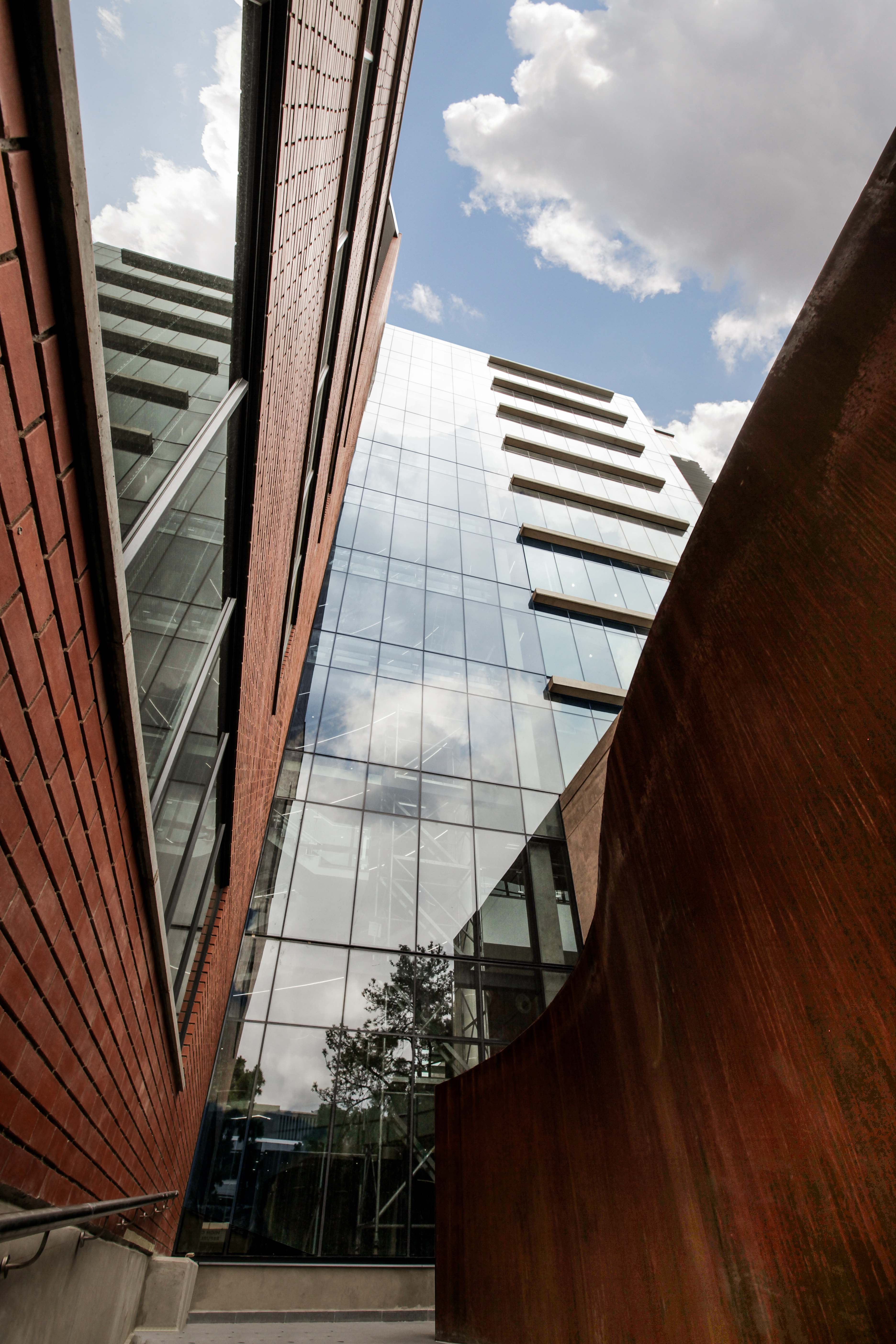
Batho Pele House gets great green credentials as public sector deepens green building collaboration
May 24, 2017
Driving the sustainability of public sector buildings in South Africa forward, the heritage-sensitive and environmentally-innovative refurbishment of the Agrivaal building in Pretoria has achieved a 4 Star Green Star SA Office v1 – As Built rating from the Green Building Council South Africa (GBCSA).
The refurbished Agrivaal component of Batho Pele House is one of Pretoria’s legacy treasures, located in Arcadia at the heart of the city centre and a block from the Union Buildings. The 10-storey building, which spans 22,500sqm of gross floor area and 16,850sqm of parking area, is the home of the National Department of Public Service and Administration.
Different areas of the site were developed over decades, starting with its southern wing in 1938. In 1946, a northern block was built to extend the southern wing. Then, in 1952 its western wing was built and its council hall was added in 1961. The existing building’s architecture is a combination of early Art Deco and Modernistic styles.
Now, with its extensive refurbishment by the National Department of Public Works, the building’s refreshingly respectful upgrade has helped it reach new standards of energy efficiency, environmental quality and occupancy comfort as an independently certified green government office building.
The building’s new ‘South African contemporary’ design brings it up-to-date with the latest in quality office space. The refurbishment features the red brick associated with historical Pretoria architecture and the respect of local materials, increasingly linked with the city’s redevelopment.
“We are incredibly proud to announce this important rating for Batho Pele House. It places the building at the forefront of green building innovation in South Africa, particularly in the public sector. This is an achievement that everyone can celebrate,” says Dorah Modise, CEO of the GBCSA. “We congratulate the Department of Public Works on the exceptional refurbishment of this building and for embracing green building principles and practices for more and more public buildings around South Africa.”
She adds: “Batho Pele House proves that old buildings, even buildings of historical significance, can include the very latest resource-efficient specifications. It has created a symbol of a government that is building towards a better future.”
Department of Public Works project manager, Musawenkosi Mncwango, says: “Our extensive refurbishment of the historical administration building previously known as the Agrivaal building, and now known to the public as Batho Pele House introduced some interesting approaches to sustainability while respecting the history of the existing building. We are excited the project has extended the lifespan of this unique asset. It will stay a relevant, flourishing and sustainable workplace of government for many years to come.”
Green building is all about designing, building and operating buildings in a sustainable way. Batho Pele House integrates it with all the amenities that come with its central location, including easy access for pedestrians, cyclists and public transport users, thus lightening its environmental footprint.
It also features generous natural light with glare reduced by smart shading, while still offering great external views. It has an energy-efficient lighting system and low volatile organic compound finishes. Its superior water efficiency is achieved with low-flow fittings, rainwater harvesting and grey water filtration for reuse in the building.
All this is supported by an extensive metering and monitoring system, as well as a building users’ guide so all building occupants and visitors can be made aware of the various services and systems in place and how to operate them, thus optimising environmental performance.
It isn’t only the final result of the refurbishment that has delivered green innovations; its construction process also achieved impressive reductions in embodied energy. At least 90% of its construction steel is recycled and a specialised concrete mix was used which ensured that the original Portland cement was reduced.
Roxanne Dovey, the project’s Sustainability Consultant at WSP Group said that this incredible achievement for a National Government Department demonstrates government’s commitment to reducing environmental impacts on our growing nation.
“WSP’s multi-disciplinary engineering and sustainability appointment on this project realised a well-integrated design for the building, inclusive of future-proofing aspects where possible. The multi-disciplinary nature of the project enabled easier collaboration between the engineers and the sustainability team for the duration of the seven year project.”
To ultimately achieve the sustainability objectives of the project it was crucial that the activities in all the project stages should be aligned to accomplish this goal. Being national government’s first project to aim for this ambitious objective the project management process was a learning curve and sometimes challenging. However, with the assistance of a dedicated team led by Hendrik Prinsloo, a highly experienced Project Manager at HPM Consultants, this complicated and involved process was completed successfully.
“The sustainability team played a major role in monitoring project progress through design development, construction and commissioning stages. The final As Built Rating is a great confirmation that the services provided by WSP have embedded sustainability principles into the design and operation of Batho Pele House,” says Dovey.
Modise explains that green building is a good business decision which also mitigates against climate change. Importantly, it is more straightforward than many may think, and the GBCSA works with the public and private sectors to help make it happen.
“Green public buildings are resource efficient and cost efficient, saving on municipal utility bills. They are also proven to create healthy workspaces for government employees and visitors that inspire their well-being and productivity, so everyone benefits from green public buildings,” concludes Modise.






